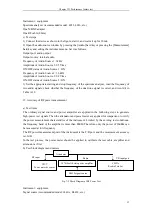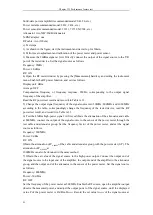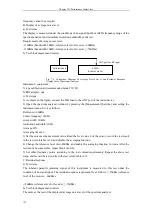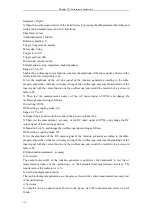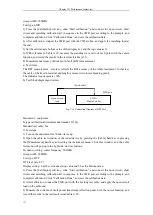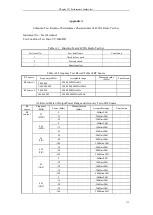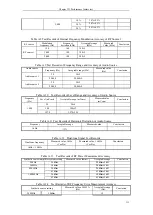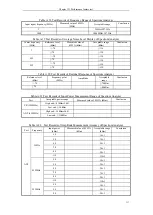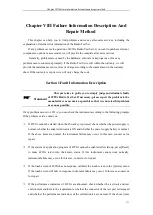
Chapter VII Performance feature test
107
Adder: 20Hz to 1kHz
In the case of fundamental wave output, adjust the voltage of the fundamental wave, until the
output voltage amplitude is about 1V.
In the case of distortion wave output, adjust the harmonic voltage, until the output voltage
amplitude is about 1V.
Select the distortion wave output as the final button mode.
First connect the output of the distortion source to the input end of Channel L of the audio
analyzer.
3) Set the audio analyzer as follows:
Input channel: Channel L ON
Measurement mode: THD
INPUT: 100kΩ UNBAL
SP: SLOW
4) Set the distortion degree of ZN5541 audio distortion source according to the requirements of
Table A.25, and record the distortion test results of the audio analyzer.
5) Connect the output of the distortion source to the audio input end of the tested device. Open the
audio meter window by pressing the [Audio] hard key or pressing the [Measurement] hard key
and setting the instrument menu. Set it as follows:
Distortion type: THD
Average: OFF
Impedance: high impedance
Range: 0.01V to 3V
6) Set the distortion degree of ZN5541 audio distortion source according to the requirements of
Table A.25, and record the distortion test results of the tested device in Table A.25.
21. SINAD measurement accuracy of audio meter
a) Test items
The ZN5541 audio distortion source is applied to generate audio distortion signals, and the test
results of the standard audio analyzer are used as the comparison benchmark to test the accuracy
of audio SINAD measurement of the tested device. The accuracy of audio SINAD measurement
of this instrument is as follows:
1.5dB (8-35dB).
b) Test block diagram and meters
The test block diagram and meters are the same as those in the audio distortion meter test.
c) Test steps
1) Connect the device as shown in the figure, start it, and warm it up for 30min.
2) Set the standard ZN5541 audio distortion source as follows:
Fundamental wave frequency: 1kHz
Adder: 20Hz to 1kHz
In the case of fundamental wave output, adjust the voltage of the fundamental wave, until the
output voltage amplitude is about 1V.
In the case of distortion wave output, adjust the harmonic voltage, until the output voltage
amplitude is about 1V.
Select the distortion wave output as the final button mode.
First connect the output of the distortion source to the input end of Channel L of the audio
analyzer.
Summary of Contents for 4992A
Page 1: ...I 4992A Radio Test Set User Manual China Electronics Technology Instruments Co Ltd...
Page 2: ......
Page 5: ......
Page 6: ......
Page 7: ......
Page 23: ...Article I Handling Instructions 11 Article I Handling Instructions...
Page 93: ...81 Article II Technical Specifications...
Page 132: ...Article III Maintenance Instructions 120 Article III Maintenance Instructions...

